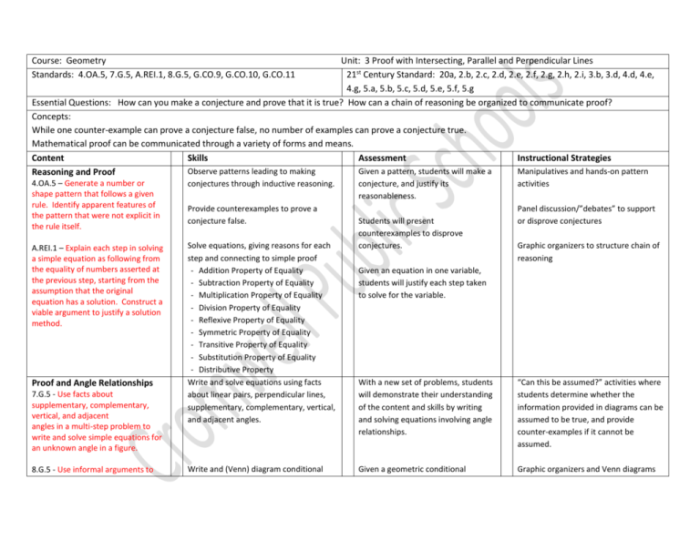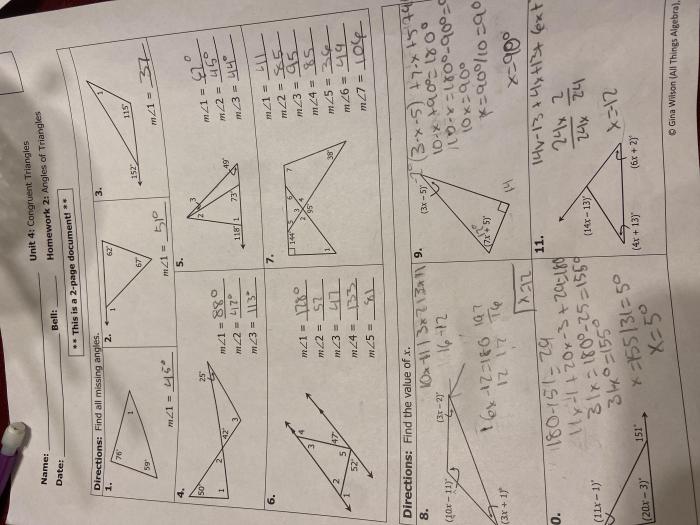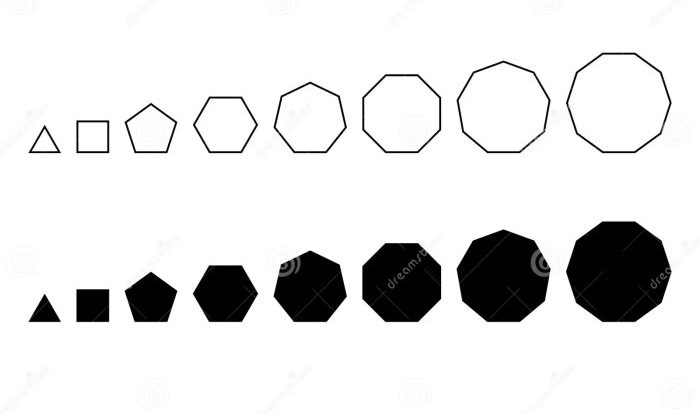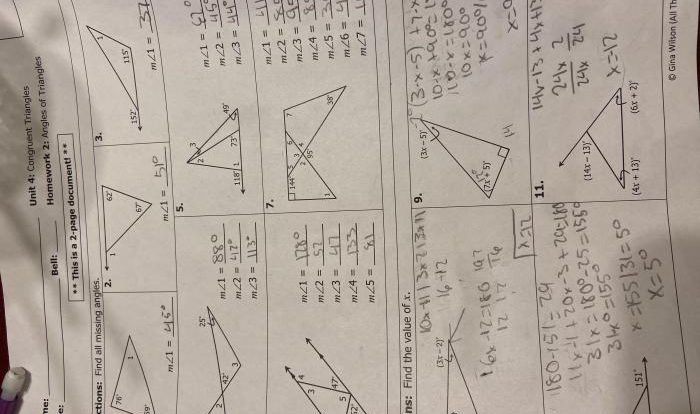Welcome to the ultimate guide to Geometry Unit 4, where we delve into the captivating world of geometry, unlocking the secrets of shapes, their properties, and the theorems that govern them. Prepare to embark on an enlightening journey as we unveil the Geometry Unit 4 Study Guide Answer Key, your trusted companion to conquer Unit 4 with confidence and finesse.
This comprehensive guide will illuminate the fundamental concepts, theorems, and postulates that form the bedrock of Unit 4. We’ll explore geometric shapes in all their diverse forms, unraveling their properties and relationships. Get ready to conquer the challenges of Unit 4 with a study guide that empowers you with knowledge and understanding.
Geometry Unit 4 Concepts
Unit 4 of Geometry focuses on the study of triangles, quadrilaterals, and circles. Students will learn about the properties of these shapes, as well as the theorems and postulates that relate to them.
Triangles
- Definition of a triangle
- Types of triangles (scalene, isosceles, equilateral)
- Triangle congruence theorems
- Triangle similarity theorems
Quadrilaterals
- Definition of a quadrilateral
- Types of quadrilaterals (parallelogram, rectangle, square, trapezoid)
- Properties of quadrilaterals
- Quadrilateral congruence theorems
Circles
- Definition of a circle
- Parts of a circle (radius, diameter, circumference)
- Circle theorems
- Area and circumference of a circle
Study Guide Content
The study guide for Unit 4 of Geometry should cover all of the topics listed above. It should be organized into logical sections and subsections, and it should include practice problems, exercises, and review questions.
Sections, Geometry unit 4 study guide answer key
- Triangles
- Quadrilaterals
- Circles
Subsections
- Definitions
- Properties
- Theorems
- Practice problems
- Exercises
- Review questions
Answer Key Structure

The answer key for the study guide should provide detailed solutions to all problems and questions. It should use clear and concise language to explain the steps involved in solving each problem. Additional notes and explanations should be provided where necessary.
Format
- Problem number
- Problem statement
- Solution
- Additional notes (optional)
Interactive Elements
Interactive elements can help to make the study guide more engaging and effective. Some possible interactive elements include:
- Interactive simulations or diagrams that illustrate geometric concepts
- Online quizzes or games to test understanding
- Access to video tutorials or other multimedia resources
Visual Aids

Visual aids can help to make the study guide more visually appealing and easier to understand. Some possible visual aids include:
- Charts
- Graphs
- Diagrams
- Real-world examples or applications of geometric principles
Assessment and Evaluation
Assessment tools can be used to evaluate students’ understanding of the material in Unit 4. Some possible assessment tools include:
- Quizzes
- Tests
- Projects
- Presentations
Rubrics
Rubrics can be used to grade different types of assessments. Rubrics should be clear and concise, and they should provide specific criteria for evaluating student work.
FAQ Explained: Geometry Unit 4 Study Guide Answer Key
What is the Geometry Unit 4 Study Guide Answer Key?
The Geometry Unit 4 Study Guide Answer Key is a comprehensive resource that provides detailed solutions to all problems and questions in the Geometry Unit 4 Study Guide.
How can I use the Geometry Unit 4 Study Guide Answer Key?
Use the Geometry Unit 4 Study Guide Answer Key to check your answers, identify areas where you need additional support, and reinforce your understanding of the concepts covered in Unit 4.
What are the benefits of using the Geometry Unit 4 Study Guide Answer Key?
The Geometry Unit 4 Study Guide Answer Key offers numerous benefits, including improved problem-solving skills, enhanced conceptual understanding, and increased confidence in your geometry abilities.

